

Mitchell Lane PUBLISHERS
Copyright 2006 by Mitchell Lane Publishers. All rights reserved. No part of this book may be reproduced without written permission from the publisher. Printed and bound in the United States of America.
Printing 1 2 3 4 5 6 7 8 9
A Robbie Reader/Natural Disasters
Earthquake in Loma Prieta, California, 1989
The Fury of Hurricane Andrew, 1992
Mt. Vesuvius and the Destruction of Pompeii, A.D. 79
Mudslide in La Conchita, California, 2005
Tsunami Disaster in Indonesia, 2004
Where Did All the Dinosaurs Go?
Library of Congress Cataloging-in-Publication Data
Roberts, Russell.
Where did all the dinosaurs go? / by Russell Roberts.
p. cm. (Natural Disasters what can we learn?)
Includes bibliographical references and index.
ISBN 1-58415-420-9 (library bound)
1. Dinosaurs ExtinctionJuvenile literature. 2. Reptiles, FossilJuvenile literature.
I. Title. II. Series.
QE861.6.E95R63 2005
567.9 dc22
2005009691
eISBN: 978-1-54574-959-3
ABOUT THE AUTHOR: Russell Roberts has written and published over 35 books for adults and children on a variety of subjects, including baseball, memory power, business, New Jersey history, and travel. He has also written numerous books for Mitchell Lane, such as Pedro Menendez de Aviles, Philo Farnsworth Invents TV, Robert Goddard, Bernardo de Galvez, and Mt. Vesuvius and the Destruction of Pompeii, A.D. 79. He lives in Bordentown, New Jersey, with his family and a fat, fuzzy, and crafty calico cat named Rusti.
PHOTO CREDITS: Cover composite by Jamie Kondrchek; title page M. Kulyk/
Photo Researchers; p. 4Jacana/Photo Researchers; p. 6Stephen J. Krasemann/Photo
Researchers; pp. 7, 9, 16 Roger Harris/Photo Researchers; p. 10 Francois Gohier/
Photo Researchers; pp. 12, 15 Chase Studio/Photo Researchers; p. 13 Sheila Terry/
Photo Researchers; p. 14 Chris Butler/Photo Researchers; p. 19G. I. Bernard/Photo
Researchers; p. 20Sherwin Crasto/AP Wide World; p. 24 D. van Ravenswaay/
Photo Researchers; p. 26John R. Foster/Photo Researchers; p. 27C. Butler/Photo
Researchers; p. 28 Mark Garlick/Photo Researchers.
PUBLISHERS NOTE: The following story has been thoroughly researched and to the best of our knowledge represents factual events. While every possible effort has been made to ensure accuracy, the publisher will not assume liability for damages caused by inaccuracies in the data, and makes no warranty on the accuracy of the information contained herein.
TABLE OF CONTENTS
Chapter One
A Different World
Chapter Two
Digging for Dinosaurs
Chapter Three
Extinction
Chapter Four
Rejected Theories
Chapter Five
Possible Theories
Words in bold type can be found in the glossary.
 CHAPTER ONE
CHAPTER ONE
A DIFFERENT WORLD
Picture the world millions of years ago. A large dinosaur is standing in a lake. It is eating a plant. The earths climate (KLY-met) is different than it is today. It is warmer. There are lots of plants that grow well in warm weather.
Large creatures are swimming in the oceans. Some fly in the air. Smaller animals scurry about on the ground. But mainly there are dinosaurs of all sizes. Some peacefully eat plants. Others are meat eaters. Meat eaters eat other animals-including dinosaurs!
There are no people there. Most of the animals that you can name today do not exist, either. Dinosaurs rule the world.

Ornithomimus (or-NIH-thoe-MIE-mus), or bird mimic, was like an ostrich in some ways. It could run faster than 35 miles per hour.
The dinosaur in the lake keeps eating. It probably does not think about the future. It does not think that someday all the dinosaurs might be gone.
But they will.

This flying reptile, called a pteranodon (teh-RAH-nuhdon), lived about 80 million years ago. It ate a lot of fish.
What happened to the dinosaurs?
That is a question people have been asking for many years. It is a big mystery. No one knows the answer.
Dinosaurs lived on the earth for over 180 million years. You have probably heard of them. Maybe you have seen drawings of them in books. Perhaps you have seen them in movies or on television.
One dinosaur was Tyrannosaurus (tie-RAN-oh-SAWR-us) rex. Sometimes it is called T. rex. It was 20 feet tall. Its teeth were sharp as knives. It had two small front arms and walked on its strong back legs. T. rex was a meat eater. Movies often use T. rex when they want to show a scary dinosaur.
Not all dinosaurs were so frightening. Brachiosaurus (bray-kee-o-SAWR-us) was one of the largest dinosaurs. It was as long as two school buses put end to end. It ate plants and was peaceful. Apatosaurus (uh-POT-uh-SAWR-us) was another large dinosaur. It could be 90 feet long and also ate plants.
These are just three of the many kinds of dinosaurs. But why are they not here anymore?

Tyrannosaurus rex was a meat-eating dinosaur.
 CHAPTER TWO
CHAPTER TWO
DIGGING FOR DINOSAURS
One day in 1838, a farmer in New Jersey was digging a hole. He found a very large black bone. It was too big to belong to any animal he knew.
Over the years the farmer sometimes found more big bones. His neighbors heard about them. They came to look at them. What could they be? What animal could they have come from? No one knew. The farmer gave away pieces of the big bones as gifts.
This went on for 20 years. Then a scientist named Joseph Leidy heard about the bones. He came to look at them. He got very excited. He thought they could be dinosaur bones.

Bones from Hadrosaurus were first found in New Jersey. Hadrosaurus may have looked like the dinosaurs drawn above.
They were. Leidy dug up many more bones. He took them to a museum (mew-ZEE-um). When they were put together, the bones formed a complete dinosaur skeleton. It was the first complete skeleton to be found in the United States. It was called Hadrosaurus (had-ruh-SAWR-us).
People have not always known about dinosaurs. The word dinosaur did not exist until 1842, when an English scientist named Richard Owen invented it. He combined two Greek words that mean terrible lizard. He said his new word described creatures that had once lived on the earth.
Since the early 1800s, scientists have found dinosaur bones all over the world. Sometimes they even find dinosaur eggs. Their discoveries help them form theories (THEER-eez). Theories are explanations. Theories try to answer questions.
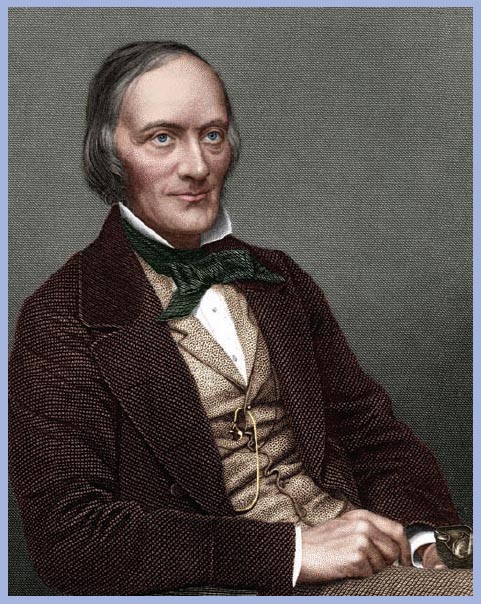
Next page

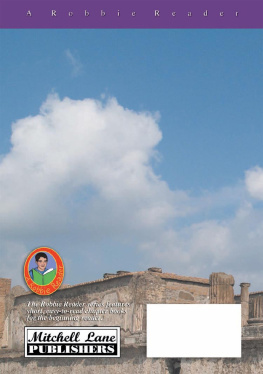

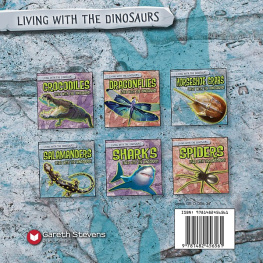
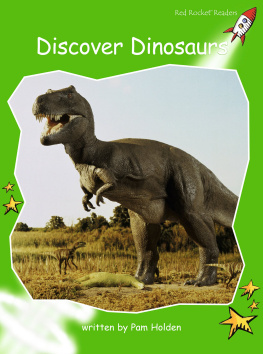
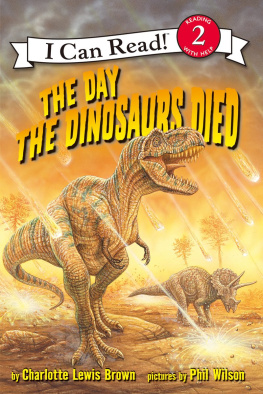
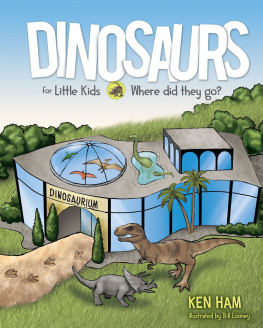
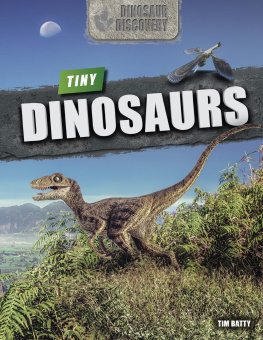
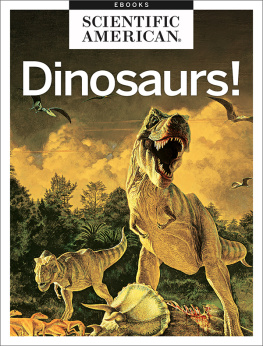
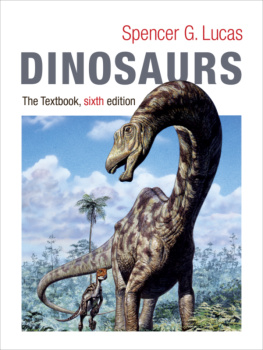
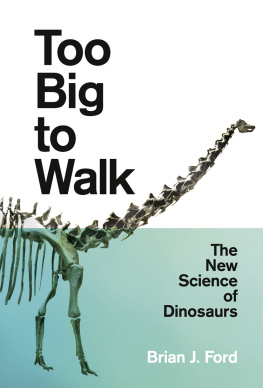
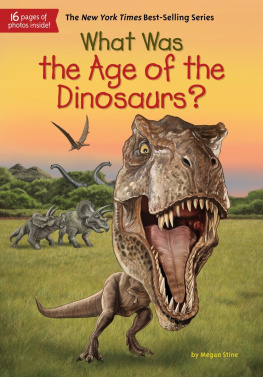


 CHAPTER ONE
CHAPTER ONE



